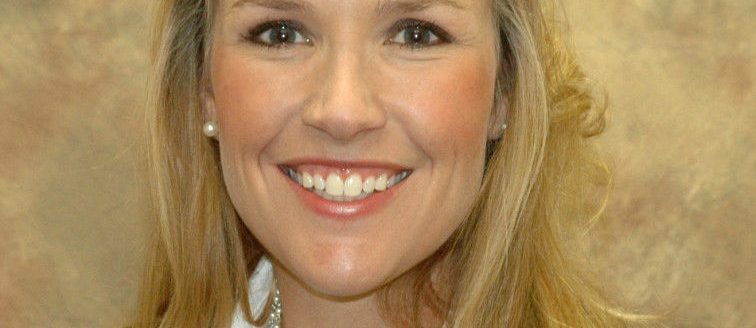Double cropping sorghum a doable option
Many sorghum farmers have a lot in common. Some 70% grow wheat in their rotations. And for Scott Staggenborg, that means they probably also have livestock.
“That also means that there are a lot of your operations that have four-legged things running around and they have to eat every day,” he said.
Staggenborg, director of product marketing for S&W Seed Company, spoke about the versatility of forage and grain sorghums during the Sorghum U/Wheat U event held virtually Aug. 11 and 12. The event was sponsored by High Plains Journal.
Sorghum silages, hay and forage sorghums end up being a pretty important part of many operations. So is double cropping sorghum.
“I think there’s a value component there that we don’t often think about,” Staggenborg said.
Currently sorghum prices are strong, and because of that he sees interest in double cropping sorghum for grain because it gives growers an opportunity to take advantage of economics. Back when Staggenborg was working with no-till cropping systems he saw the challenge of transitioning between summer and winter crops.
“We did things like plant feed after summer crops and plant them late,” he said. “There was always this process and a lot of places in the state, particularly the central part, and even eastern part where we get more rains. The easiest ways to transition from wheat back to row crops is double crop them.”
The other nice thing about double crop sorghum is the fact it utilizes summer moisture. In Kansas there’s “a fair amount of rain” in July and August.
“With wheat harvest occurring in early June, you can get double crop sorghum in late June, early July,” he said. “You get an opportunity to take advantage of the rain that comes in July and August.”
There are also a couple of options for making grazing or hay pay and knowing the most appropriate hybrid really can help. So can proper management of nutrients.
“You do have to fertilize obviously double crop sorghum just like any sorghum,” he said.
From his research, one of the advantages of double cropping sorghum is how it utilizes the carry over nitrogen from wheat.
“Now this is going to be a challenge to measure and I would suggest you talk to someone who understands nitrogen cycling better than I do,” he said. “Because despite the fact you may have put a fair amount of nitrogen on your wheat how available it is going to be a function of a lot of variables.”
He doesn’t think you’re going to get a “free ride on sorghum” as a double crop though.
“Maybe after failed wheat, there would be some credits but nonetheless, you should try to supply 100 pounds of nitrogen in your system,” he said. “How you get it to the crop is up to you.”
It’s also important to increase seeding rates about 10% if double cropping. A full season sorghum planted in May will have more opportunity for tillering, while a June or July planted one won’t.
“Tiller survival in sorghum is a function of cool night temperatures,” he said. “We seldom see tillers in June and July planted crops because it’s a function of plant growth rates in development.”
And again, if there’s not enough plants out there, a higher seeding rate won’t help anyway.
Sign up for HPJ Insights
Our weekly newsletter delivers the latest news straight to your inbox including breaking news, our exclusive columns and much more.
“If you have a poor stand, now you’re counting on head size to compensate,” Staggenborg said. “I never liked it on sorghum when we count on one variable to do all of the compensation.”
When raising double crop sorghum, herbicide programs need to be part of the planning process.
“I think of them about like I would have full season program,” he said.
There’s going to be volunteer grass, and until companies like S&W can get their Double Team sorghum out where there’s over-the-top grass control, you have to take care of it with what’s available out on the market already.
“Then of course broadleaf weed control is going to be similar to what you always use,” Staggenborg said. “Whether you can still use Atrazine because of resistances, or whether you go with a Husky tank mix.”
Nonetheless, weed control is still going to be an issue.
“Because to be successful, you’re going to want to get some rain and when you get rain we get weeds,” he said.
As for hybrid selection, go with a shorter season sorghum hybrid, something in the medium-early range.
“I would get something that’s sugarcane aphid tolerant,” he said. “Think about when the sugarcane aphids move up from the south, your May planted crop or your early planted crop is much bigger. So 500,000 bugs per leaf is not such a big deal on that size of plant.”
A much smaller plant couldn’t handle that kind of SCA load.
“If you can’t find SCA tolerant hybrids (use) medium-early, high yielding and make sure you put a seed applied insecticide on it that will give you some coverage against early SCA,” Staggenborg said. “At least for a while if you can’t get something that’s taller, and the seed treatment helps.”
Sometimes when double crop sorghum is planted, depending on how fall harvest goes, getting it out of the field can be a challenge. Adding a desiccant to help dry down the sorghum crop could be helpful.
“This is one of those—seems like game time decisions,” Staggenborg said. “It depends on the year as to whether you need this or not but right now I think the most effective approach is using glyphosate on and it’s pretty effective on sorghum, so it’ll help dry down pretty fast.”
Grazing double-cropped sorghum residue at the end of the season should be factored into the crop planting decisions.
“When it comes to grazing stalks, there are a few crop options we have in the High Plains that are better than sorghum,” he said. “Kind of hard to graze soybean stubble. Kind of hard to graze cotton stubble. There is some grazing around corn stalks, but sorghum stalks have a lot of value from a grazing point of view.”
Sorghum stalks are a little more resilient and hang around longer.
“And it’s something to keep in mind as you’re making cropping decisions because it can benefit the bottom line if you’ve got four-legged things that you’ve got to feed all winter,” Staggenborg said.
Kylene Scott can be reached at 620-227-1804 or [email protected].



